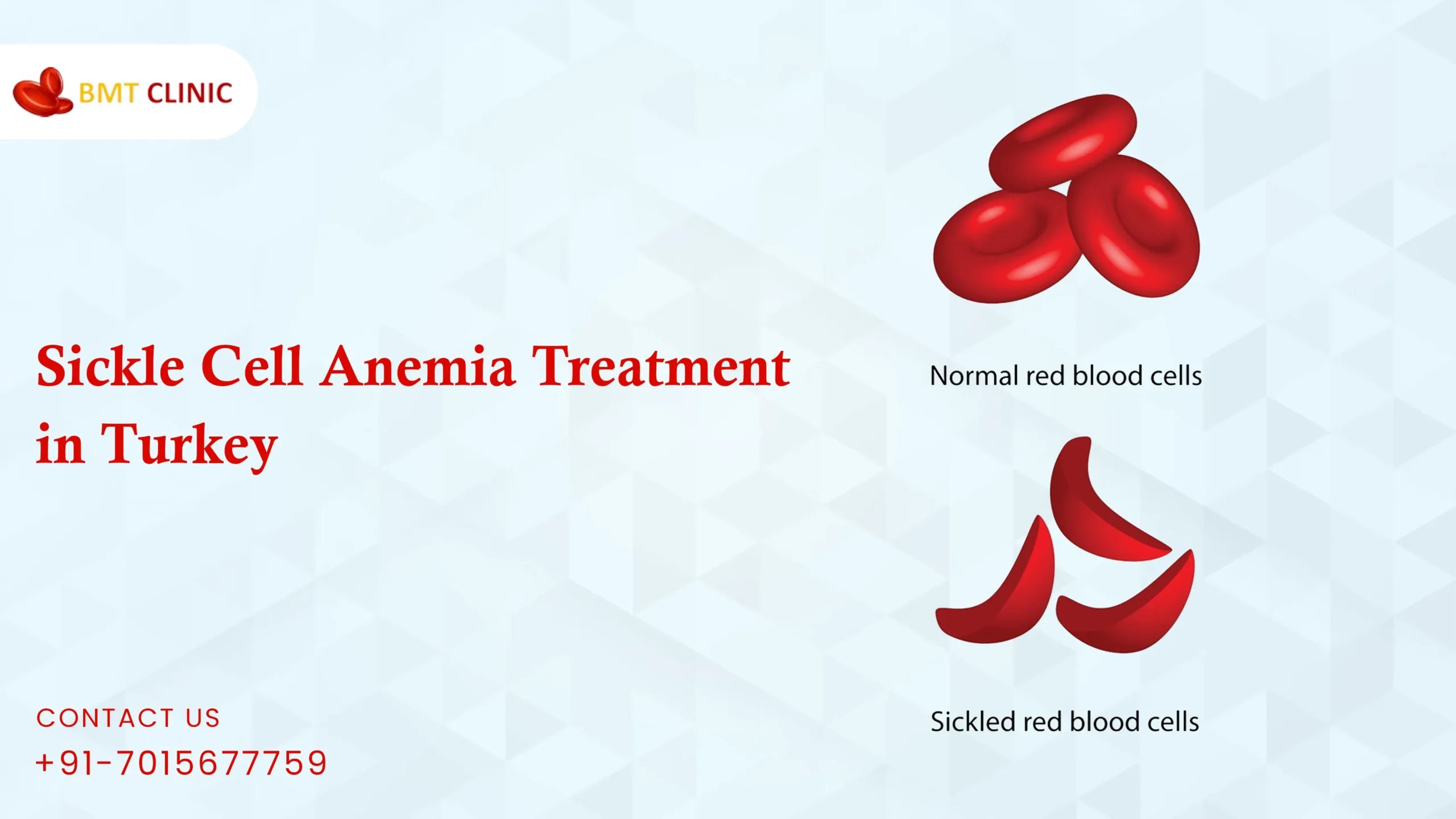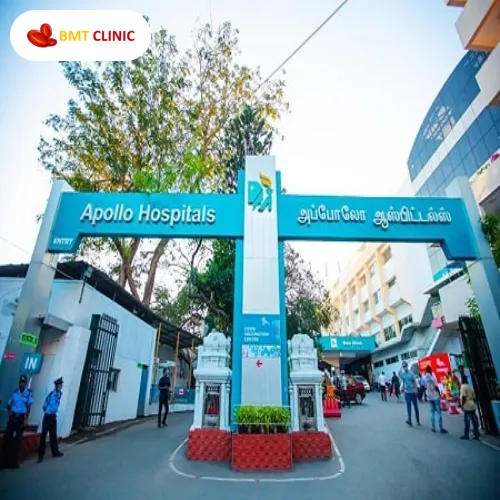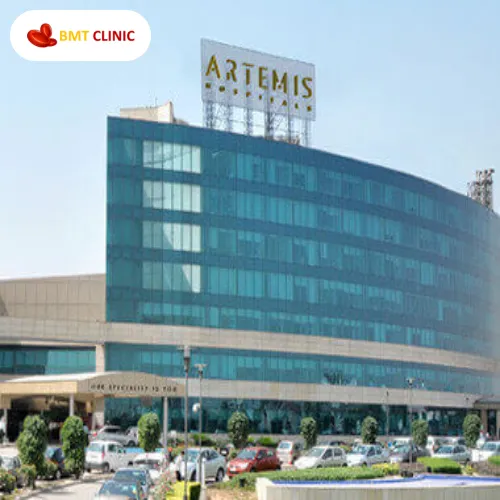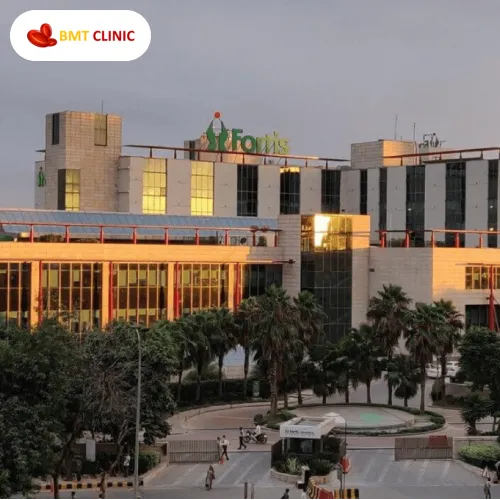Sickle cell anemia is a type of sickle cell disorder, an inherited disorder that leads to abnormal red blood cell production. This condition can lead to severe health complications and thus, require specialized care.
Turkey has become a popular destination for sickle cell anemia treatment. With its growing reputation in medical tourism, patients from around the world are increasingly seeking treatment in Turkey for its high-quality healthcare services and innovative approaches.
Let’s get an insight about sickle cell anemia, factors affecting treatment cost, risk factors, treatments, and some of the financial assistance options.
Sickle Cell Anemia Treatment Cost in Turkey
Sickle cell anemia treatment cost in Turkey ranges start from USD 52000. It can also vary widely depending on the type of procedure or the location of the hospital, but the cost of a sickle cell anemia treatment in Turkey is generally much more affordable than in Western countries.
| Treatment | Starting Price |
| Allogenic Bone Marrow Transplant | USD 190000 |
| Autologous Bone Marrow Transplant | USD 16000 |
| Haplo- allogeneic transplant | USD 17000 |
Similar treatments in the United States will cost more than the price in Turkey.
Note: Keep in mind that the costs given here are only for the treatment.
Factors That Can Affect Sickle Cell Anemia treatment Cost in Turkey
There are several factors that can influence the cost of bone marrow treatment in Turkey. This includes:
- Type of MPN: The bone marrow transplant is more costlier than other treatments due to its complex process.
- Type of Treatment: Hospitals in big cities might be costlier than those in the smaller cities.
- Duration of Treatment: The duration of the treatment will also affect the cost of the treatment.
- Diagnostic Tests: Diagnostic cost depends on the initial assessments, regular monitoring, and follow-up tests. Advanced imaging and laboratory tests may also be required, influencing the overall budget.
- Medications: The price of the medication varies depending on the type, brand, and dosage. Some newer therapies may be more expensive.
- Additional costs: When planning for treatment, it’s important to account for additional expenses that may arise, such as:
- Travel and accommodation for international patients.
- Post-treatment follow-ups and medication.
- Potential complications may extend hospital stays.
- Caregiver expenses.
Understanding the Sickle Cell Anemia
Sickle cell anemia (SCA) is a genetic blood disorder that is characterized by the production of abnormal hemoglobin, known as hemoglobin S. Hemoglobin is the protein in red blood cells that carries oxygen. It normally has two alpha chains and two beta chains. This causes the formation of the abnormal red blood cells that are sickle/crescent-shaped. These cells can’t carry oxygen as efficiently, leading to fatigue and other symptoms. These abnormal cells can clump together, obstructing blood flow in small blood vessels.
The main types of sickle cell anemia are caused by different mutations in these genes.
- Haemoglobin SC
- Haemoglobin SD
- Haemoglobin SE
- Haemoglobin SS
- Haemoglobin SB0 thalassemia.
- Haemoglobin SB+ thalassemia.
What Are the Diagnostic Tests for Sickle Cell Anemia?
Sickle cell anemia diagnosis involves a combination of laboratory tests and sometimes genetic analysis. Here is the list of diagnostic tests for sickle cell anemia.
1. Medical history and physical examination
-
- Initial assessment
- Physical examination
2. New born screening tests
-
- Heel Stick test
3. Blood Tests
-
- Hemoglobin Electrophoresis
- Complete Blood Count (CBC)
- Sickle Cell Test (Sickling Test)
- Genetic Testing
4. Bone Marrow Biopsy (if necessary)
5. Additional Tests
-
- Liver and Kidney Function Tests
- Imaging Studies
Sickle Cell Anemia Treatment Types
Sickle cell anemia treatment is given based on several factors, such as the type of SCA, the patient’s condition, age, and overall health. It is important to work as a team with your provider to reduce risk and lower the complications.
Here Are the Different Types of Treatment for Sickle Cell Anemia
Medicines:
Hydroxyurea, L-glutamine, and crizanlizumab‑tmca are the drugs that are approved for sickle cell anemia.
First-line medicine to prevent sickling of the red blood cells.
Hyroxyurea: This is an oral medicine that can reduce sickling of the red blood cells and painful symptoms.
- Infants: Healthcare providers usually recommend hydroxyurea for infants as young as 9 months old who have sickle cell disease. The doses vary on the basis of the infant’s height and weight.
- Children: In children, it helps to reduce the serious symptoms such as pain crisis and acute chest syndrome. This also helps to lower the pain events and dactylitis (swelling of hands and feet).
- Adults: In adults, it can improve anemia and reduce the need for blood transfusions and hospitalizations.
- Pregnancy: pregnant women should not take this.
Medicines to prevent or reduce pain
-
- L-glutamine: Provide to the patient with age 5 years or older. It may lead to fewer hospital admissions, fewer pain crises, less need for blood transfusions, and a lower risk of acute chest syndrome.
- Over-the-counter medicine, such as acetaminophen or ibuprofen, can be used to treat mild to moderate pain due to sickle cell anemia.
- Crizanlizumab-tmca: This is approved for adults and children with an age 16 years and older. This medicine will help to prevent sticking the blood vessel wall and blocking blood flow.
Medicines to lower the risk of infection
-
- Penicillin: It helps to prevent the serious blood infection in the bloodstream.
Blood and Bone Marrow Transplant
- A blood and bone marrow transplant is a potential therapy to cure sickle cell anemia. It involves the replacement of the diseased bone marrow with healthy stem cells. It can be an allogenic (uses donor stem cells) or autologous (uses the patient’s stem cells) type of treatment. The person who receive the bone marrow is known as “recipient”. The person who donates the bone marrow is known as the “donor.”
- Human Leukocyte Antigen (HLA) testing helps to assess the match between donor and recipient. Blood and bone marrow transplants have a success rate of about 90% in children when the donor is a blood relative and a compatible HLA match.
Gene Therapies
Gene therapies aim to treat by adding new genes and modifying existing genes. In Dec. 2023, the FDA approved two gene therapies for sickle cell anemia.
- Exagamglogene autotemcel: This therapy adds a modified gene to the body.
- Lovotibeglogene autotemcel: This one modifies an existing gene.
Similar to blood and bone marrow transplants, “conditioning” like chemotherapy or radiation is given to make the space in the bone marrow to administer the genetically modified cells in the blood.
Blood Transfusion
This is used to treat and prevent certain sickle cell disease complications. This transfusion raise more normal and flexible red blood cells than red blood cells that have sickled hemoglobin. It takes 1 to 4 hours for the blood transfusion.
- Acute transfusion: To treat severe anemia complications.
- Intermittent transfusion: Help to relieve symptoms.
Pregnant women may need regular transfusions to reduce the risk of sickle cell anemia.
Why Is Sickle Cell Anemia Treatment Required For Patients Suffering From Blood Disorders?
Here are the reasons why sickle cell anemia treatment is required.
- To prevent complications
- To Manage symptoms
- To Improve quality of life
- To increase life expectancy
- To prevent long-term damage
Preparing for Sickle Cell Anemia Treatment in Turkey?
If you’re considering sickle cell anemia in Turkey, here are some things you may need to be aware of:
- Collect all necessary documentation of prior consultations and diagnostic tests.
- Select a good hospital and a good doctor to operate on you. (You can contact us at BMTClinic.com if you’re looking for sickle cell anemia treatment in Turkey.)
- Verify visa regulations (medical visas for international patients).
- Ensure that you make arrangements for a caregiver to be with you all the time that you are in the hospital.
- It is advisable to plan for an extended trip because the treatment and recovery period may range from weeks to months.
Financial Assistance Options for Sickle cell Anemia treatment in Turkey
Here are some financial assistance options for sickle cell anemia treatment in Turkey.
- Insurance Coverage
- Patient assistance programs
- Non-profit organization (NGO)
- Crowdfunding
A Note from BMT Clinic
BMT Clinic is dedicated to helping patients find the right doctors and facilities for specialized care. As a leader in medical tourism, we welcome international patients and offer streamlined services to assist with travel, accommodation, and post-treatment follow-up. Our mission is to deliver the highest quality care in a supportive environment, empowering patients and their families to navigate this process with confidence. Let us be your trusted partner on the path to recovery.














